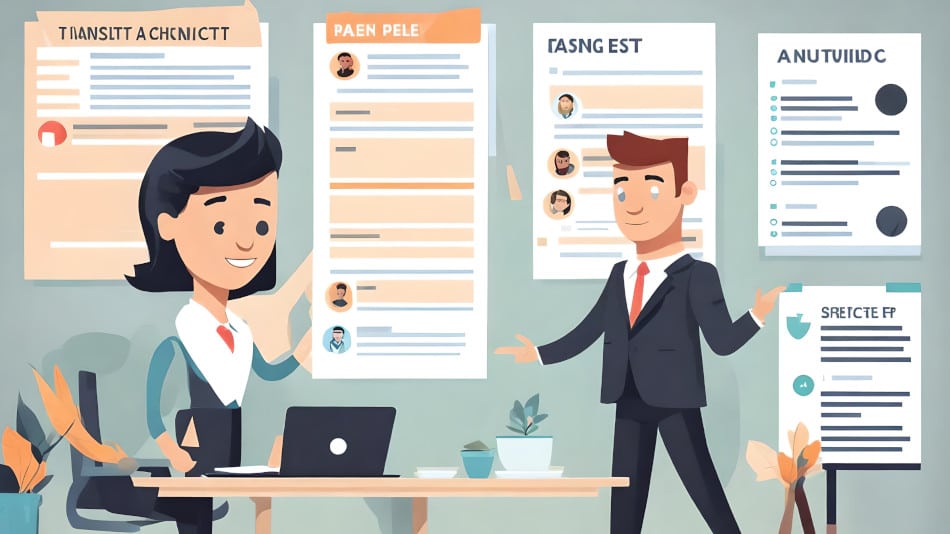In the competitive world of job hunting, one-size-fits-all CVs no longer cut it. To stand out in the crowd and increase your chances of landing that dream job, you must master the art of CV customisation for each job application. In this guide, we’ll delve into the strategies and techniques that will help you create tailored CVs that resonate with potential employers.
The power of customisation
The first and most crucial lesson in CV customisation is understanding why it’s essential. Recruiters and hiring managers receive countless applications for each job posting. Tailoring your CV to match the specific requirements and expectations of each position makes your application stand out. It tells the employer that you’ve done your homework and are genuinely interested in the role.
Researching the job posting
The foundation of CV customisation begins with thorough research of the job posting. Start by carefully reading the description to grasp what the employer is looking for. Pay close attention to the qualifications, skills, and responsibilities listed.
Tip: Highlight the keywords in the job description. These are the terms and phrases that will guide your customisation efforts.
Identifying key requirements
Once you’ve familiarised yourself with the job posting, the next step is identifying the key requirements. These are the qualifications and skills that the employer values most for the position. Look for phrases like “must-have,” “required,” or “essential” to spot them.
Tip: Create a checklist of the key requirements, and use it as a reference when customising your CV.
Example: If the job description states “strong project management skills required,” it’s a key requirement. Your CV should clearly demonstrate your project management experience and accomplishments.
Showcasing relevant experience
With a list of key requirements in hand, it’s time to match your past experiences with the job’s demands. This is where the magic of CV customisation happens. Highlight the experiences that align with the key requirements and responsibilities of the job.
Tip: Use action verbs to describe your experiences. For instance, instead of saying “responsible for managing a team,” say “led a high-performing team of five.”
Example: If the job posting emphasises “customer service skills,” make sure you highlight your customer service experience in your CV. Mention specific roles or instances where you excelled in this area.
Highlighting achievements
Recruiters are not only interested in what you’ve done but also how well you’ve done it. To truly stand out, your CV should include quantifiable achievements. These are specific results and accomplishments that demonstrate your skills and capabilities.
Tip: Whenever possible, use numbers and percentages to showcase your achievements.
Example: If a job posting asks for “sales targets achieved,” provide specific numbers, such as “Consistently exceeded sales targets by 20% in the previous year.”
Tailoring your CV’s language
Beyond just matching your experiences, it’s essential to mirror the tone and language of the job description. This shows your alignment with the company culture and values. If the job posting uses certain industry-specific terminology consider incorporating it into your CV.
Tip: Avoid generic phrases and clichés. Instead, use industry-relevant terms to convey your expertise.
Example: If the job description mentions “collaborative team environment,” your CV should reflect this by highlighting your teamwork skills and experience.
The cover letter connection
While we’ve primarily focused on the CV, it’s important to remember that your cover letter should complement your tailored CV. Your cover letter provides an opportunity to further align your skills and experiences with the job description, so ensure that the two documents work seamlessly together.
Tip: In your cover letter, expand on the experience and achievements you’ve highlighted in your CV, showing how they make you the perfect fit for the role.
Proofreading and final adjustments
Before sending out your customised CV and cover letter, make sure you proofread it meticulously. Spelling errors, grammatical mistakes or inconsistencies can detract from the professionalism of your application. Use a checklist to ensure everything is in order.
Tip: Consider asking a friend or family member to review your documents. Fresh eyes can catch errors you might have missed.
Conclusion
Mastering the art of CV customisation is an essential skill for any job seeker. It sets you apart from the competition and demonstrates your commitment to a prospective employer. By researching job postings, identifying key requirements, showcasing relevant experiences, highlighting achievements, tailoring your language and creating a cohesive cover letter, you’ll be well on your way to crafting job-winning applications.

